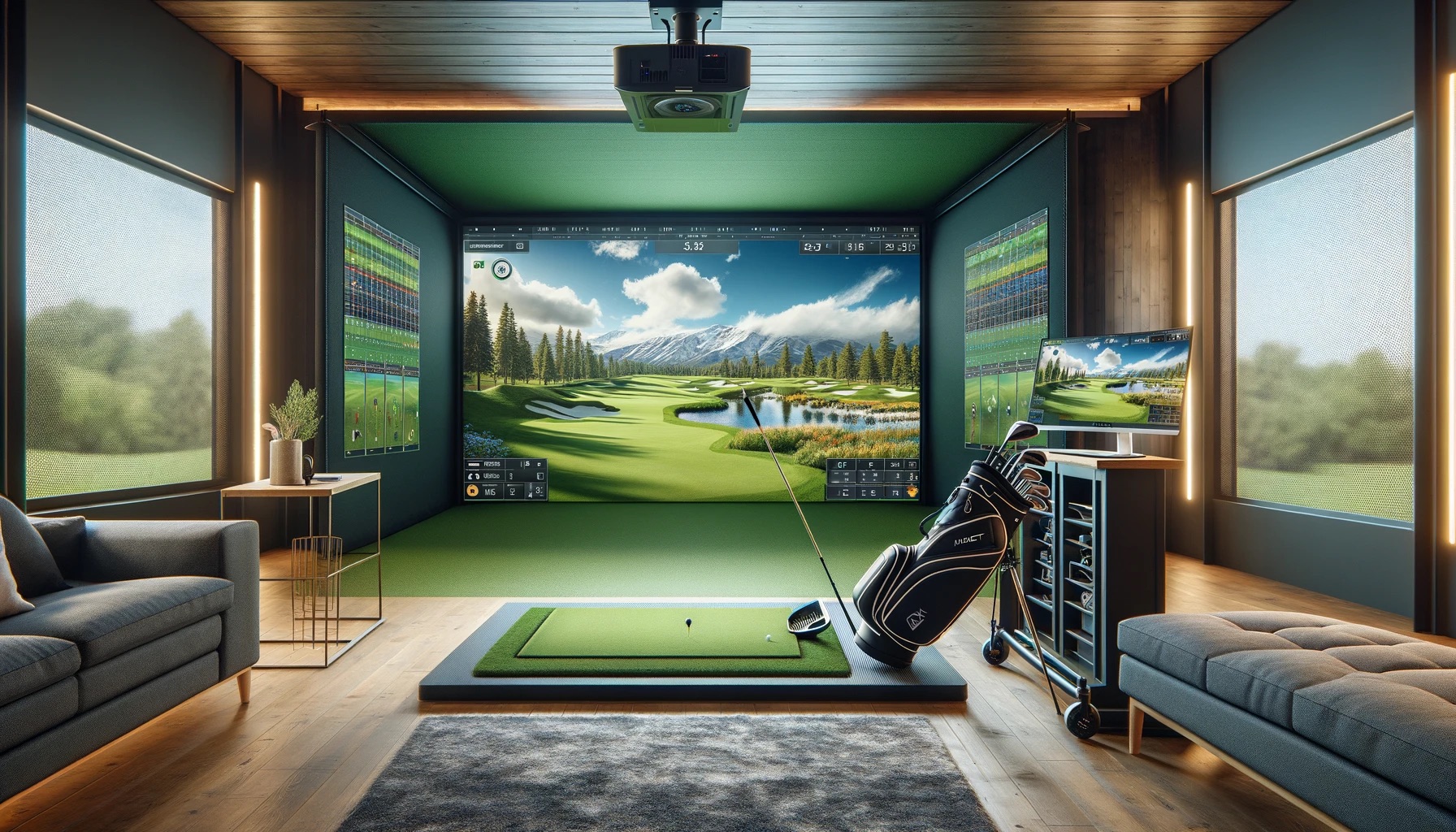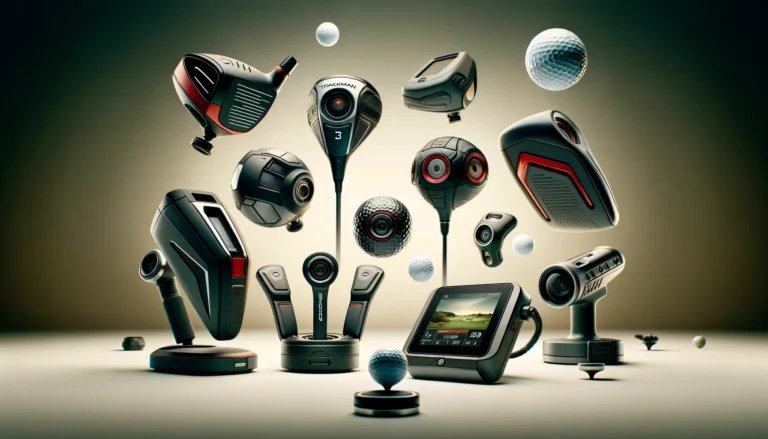How to build a golf simulator at home
Ever since the pandemic, golf simulators have grown in popularity as tools for both entertainment and serious practice for golfers at all skill levels. These systems allow golf enthusiasts to enjoy the game indoors, regardless of the weather. This blog post will delve into the various components that make up a golf simulator, detailing each component and the variations available in the market. By understanding these components, you can make an informed decision tailored to your personal needs.
Be warned – golf sims can be addictive due to their gamified nature 🙂
Summary
A golf simulator comprises several integral components that collectively simulate the outdoor golfing experience. These include the impact screen, launch monitor, golf mat, simulator software, projector, enclosure and frame, and the necessary computer and accessories. Each component has a specific role in creating an immersive and realistic golfing environment, and they come in various options to suit different preferences, spaces, and budgets.
Components of a Golf Simulator
3.1. Impact Screen
Description:
The impact screen is essential for catching golf balls and displaying the projected image of the golf course. It needs to be durable enough to absorb the impact of repeated hits while providing a clear and bright image.
Variations and Brands:
Impact screens vary in quality and price. Entry-level screens like those from Net Return offer good durability for occasional use. For more frequent use, brands like ProTee United and Carl’s Place provide high-end screens that feature enhanced image quality and noise reduction capabilities.
3.2. Launch Monitor
Description:
Launch monitors are critical for analyzing the ball’s trajectory and providing data for the simulation software. They measure variables such as swing speed, launch angle, and spin rate.
Variations and Brands:
Launch monitors come in several types, including radar-based, camera-based, and infrared. Popular radar-based monitors include the Trackman and Flightscope, known for their accuracy and use in both indoor and outdoor settings. SkyTrak and Foresight Sports offer camera-based systems that are highly accurate, especially in controlled lighting conditions.
3.3. Golf Mat
Description:
The golf mat mimics the feel of a golf course and provides the foundation for the player’s stance and swing.
Variations and Brands:
Mats vary from basic models to advanced ones with different textures to simulate various lie conditions. Fiberbuilt and TrueStrike mats offer durable, realistic options that cater to different budgets and needs. Some high-end mats even feature adjustable base systems for practicing on uneven lies.
3.4. Simulator Software
Description:
Simulator software processes the data from the launch monitor to create the virtual golf environment, managing graphics and interactive features.
Variations and Brands:
Options range from basic systems with essential features to advanced software offering high-definition graphics and a wide range of courses. E6 Connect, TGC 2019 (The Golf Club), and WGT (World Golf Tour) are popular choices that provide different levels of realism, course options, and gameplay features.
3.5. Projector and Projector Screen
Description:
The projector displays the simulation on the impact screen, and its quality is vital for an immersive experience.
Variations and Brands:
Projectors vary by resolution, brightness, and projection technology. Optoma and BenQ are popular brands that offer short-throw projectors ideal for simulator setups in limited spaces. These projectors provide high brightness and resolution to ensure a clear and vivid image.
3.6. Enclosure and Frame
Description:
The enclosure and frame structure supports the impact screen and helps to safely contain golf balls within the designated hitting area.
Variations and Brands:
Enclosures can be custom-built or purchased as part of a kit. Brands like ProTee United and SkyTrak offer modular frames and enclosures that can be configured for different spaces and needs, ranging from portable solutions to more permanent installations.
3.7. Computer and Accessories
Description:
A powerful computer is required to run the simulation software effectively, along with various accessories to enhance the user experience.
Variations and Brands:
The required specs for a computer will depend on the software used; however, gaming PCs from brands like Dell (Alienware), HP (Omen), and custom builds are typically sufficient. Accessories might include high-quality speakers from Bose or Logitech and multiple monitors for a more expansive display setup.
Conclusion
Each component of a golf simulator plays a pivotal role in creating a realistic and enjoyable indoor golfing experience. From robust impact screens to advanced launch monitors and sophisticated software, the market offers a wide range of options to suit various needs and preferences. Understanding these components and their respective brands helps prospective buyers tailor their setups for optimal performance and satisfaction, ensuring countless hours of golf regardless of the season or weather outside.


